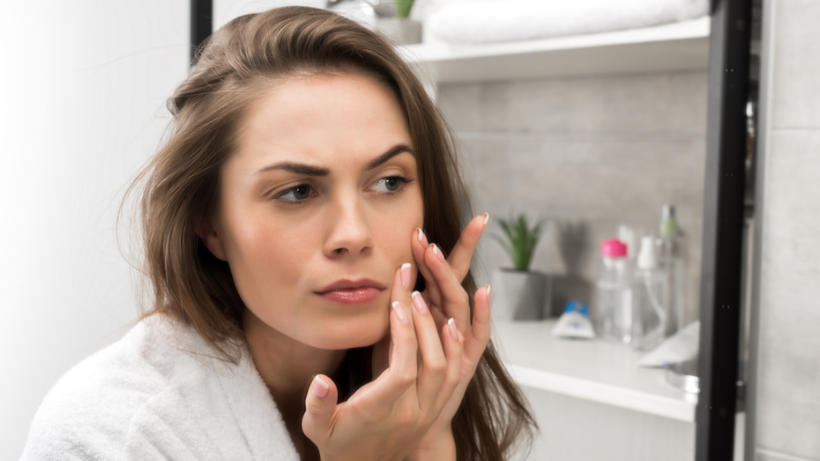It would be perfect if all the skin problems could be caused by insufficient skincare only. There are cases when cosmetic products cannot cope with the issues caused by health problems. Women’s health is fragile, and we have to oversee it and know when to visit a doctor.
Instaskincare has prepared for you a short guide on the symptoms of hormone disbalance that causes skin issues and what skincare to apply in such cases.

Hormone Disbalance Skin Issues
This problematic skin condition has its roots in the sebaceous glands. Since puberty begins, they produce and secrete increased amounts of sebum. The most significant portion of sebum is secreted between fifteen – thirty-five years.
Acne
The sebaceous glands have receptors that are sensitive to sex hormones like many functional components of the skin. They “suffer” most from testosterone from the androgen group. Androgens increase sebum production during puberty in both sexes. The more androgens bind to receptors on the surface of the sebaceous glands, and the more sebum is produced. As a result of the combination of sebum with exfoliated cells in the skin’s pore, a complex is formed that causes its blockage. A blocked pore prevents excess sebum from reaching the surface, resulting in acne.
The appearance of acne is also often associated with the phase of the menstrual cycle and, accordingly, the intensity of sebum production. The hormonal changes caused by menstruation often lead to an increase in the number of inflammatory elements on the skin of the face and body ten days before the “critical days.”
Women with higher androgen levels are more likely to suffer from acne. It also promotes excess facial hair growth, female pattern hair loss, and irregular menstrual periods. Not all female acne can be caused by the menstrual cycle. It is also triggered by bouts of stress when cortisol interferes with the sebaceous glands.
Hyperpigmentation
Skin pigmentation is familiar to many pregnant women. Throughout pregnancy, the body is characterized by high levels of estrogen. It makes the skin more sensitive to the sun, resulting in dark spots called melisma. There are ways to treat it too
Flaking
The lack of estrogen leads to drier and itchy skin. This process is observed in patients with dry skin in general. The second hormonal cause of sudden dryness of the skin can be a decrease in the thyroid-stimulating hormone of the thyroid gland.
Skincare Routine with Hormonal Disbalance
Acne
Use anti-inflammatory ingredients such as oat extract, white and green tea, horse chestnut, licorice, bisabolol, ginkgo Biloba, salicylic and glycolic acids, and niacin amide to control inflammation and keep acne in check. Pre-cleanse the skin gently with surfactant-free products.
Menopause Skin Deterioration
Many “non-hormonal” skincare options are available today to help make dry, itchy, thinned skin smoother and fresher. During menopause, when the level of estrogen decreases, and with it, the production of collagen slows down, it is essential to use products with ingredients that stimulate collagen production in the skin. These include: retinol, which are part of the vitamin A family; vitamin C, which also stimulates collagen production, brightens the skin and evens its tone; peptides and hyaluronic acid increase elastin production, collagen, effectively filling and strengthening dry skin.
Flaking
The skin needs essential fatty acids, phytosterols, ceramides, and ceramides with dryness, which develops due to a deficiency of the thyroid-stimulating hormone, estrogen, and progesterone. They protect the skin from oxidative damage that causes flaking.
Wrap Up
There are many more skin issues caused by hormones and other inner changes of the systems. The essential thing about being healthy and beautiful is to detect when the problem is not about skin only. Anyways, before applying anything, you have to consult your endocrinologist.
Laila Azzahra is a professional writer and blogger that loves to write about technology, business, entertainment, science, and health.
